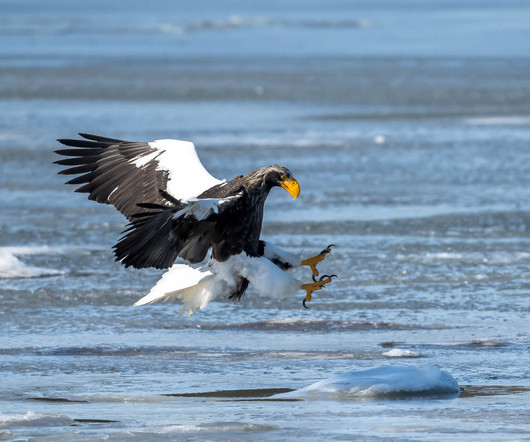A Fierce Cartoon Bird: Steller’s Sea Eagle on Hokkaido
10,000 Birds
APRIL 29, 2024
Another danger to the species comes from lead poisoning as they eat the carcasses of deer killed by hunters ( source ). The eagles do not breed on Hokkaido, spending only a few winter months there – so if you want to see courtship displays as described in here , you have to go further North a bit later in the year.











Let's personalize your content